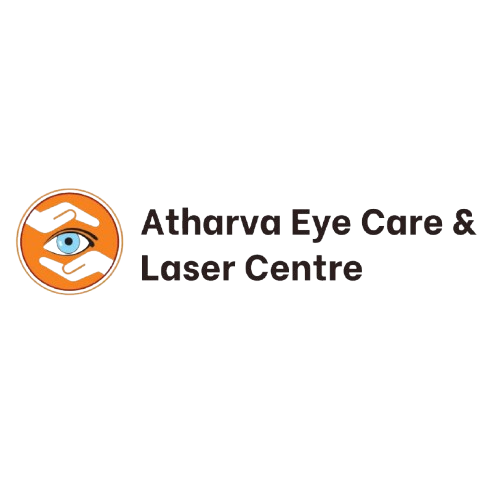- October 16, 2025
- By: atharvaeyeclinic.com
- No Comments
What is Vision Therapy ?
When we think about eye health, most of us immediately consider eyeglasses, contact lenses, or even surgical procedures. However, not all vision problems are solved with corrective lenses. Sometimes, the eyes and brain need training to work together more efficiently. This is where Vision Therapy comes in — a highly effective, non-surgical treatment designed to improve visual skills and strengthen the connection between the eyes and the brain.
What is Vision Therapy?
Vision Therapy is a personalized, doctor-supervised program that uses specific exercises, lenses, prisms, and visual activities to improve how the eyes function and how they work together with the brain. Unlike eyeglasses that simply correct refractive errors such as myopia or hyperopia, vision therapy focuses on enhancing visual skills and treating functional vision problems.
Think of it as “physical therapy for the eyes.” Just like athletes train their muscles for better performance, vision therapy trains the eyes and brain to work more effectively together.
Goals of Vision Therapy
The main objective of vision therapy is not just to improve eyesight, but to strengthen the entire visual system. Its goals include:
- Improving eye coordination (how both eyes work together).
- Enhancing eye movement control for reading and learning.
- Developing better visual processing skills.
- Reducing eye strain and fatigue.
- Helping patients with conditions that affect reading, learning, or sports performance
How Does Vision Therapy Work?
Vision therapy programs are customized for each patient based on their condition, age, and lifestyle needs. Treatment usually involves:
- Exercises – Eye-tracking activities, focusing drills, and coordination tasks.
- Special equipment – Lenses, prisms, filters, balance boards, or computer-based programs.
- Regular sessions – Supervised by an optometrist or ophthalmologist, usually once or twice a week, with additional exercises at home.
Over time, these activities train the brain and eyes to function more effectively, leading to improved comfort, focus, and performance.
Who Can Benefit from Vision Therapy?
Vision therapy is suitable for both children and adults. It is often recommended for patients who struggle with visual skills despite having normal eye health and 20/20 eyesight.
- Children with Learning Difficulties
- Kids with reading problems, difficulty focusing, or skipping lines in books may benefit greatly.
- Vision therapy can improve eye-tracking and focus, making learning easier.
- Patients with Strabismus or Amblyopia
- Vision therapy can help treat lazy eye (amblyopia) and eye turn (strabismus) by training both eyes to work together.
- Adults with Visual Fatigue
- Professionals who spend long hours on computers may experience eye strain, headaches, or difficulty focusing. Vision therapy helps relieve digital eye strain.
- Post-Concussion or Brain Injury Patients
- After a head injury, patients may face difficulty with focus, depth perception, or eye coordination. Vision therapy supports visual rehabilitation.
- Athletes
- Sports vision training enhances reaction time, hand-eye coordination, and focus, giving athletes a performance edge.
Common Conditions Treated with Vision Therapy
- Amblyopia (Lazy Eye)
- Strabismus (Crossed Eyes)
- Convergence Insufficiency (difficulty focusing on near tasks)
- Eye movement disorders
- Double vision
- Visual-perceptual problems in children
- Eye strain from prolonged screen use
Benefits of Vision Therapy
The benefits of vision therapy go beyond just improving sight. Some key advantages include:
- Better Reading and Learning – Children can read more smoothly and with greater comprehension.
- Reduced Eye Strain – Especially important for students and working professionals.
- Improved Attention and Focus – Helps children concentrate better during studies.
- Enhanced Sports Performance – Athletes gain sharper visual reflexes and coordination.
- Improved Quality of Life – Clearer, more comfortable vision for daily tasks.
Vision Therapy vs. Glasses and Surgery
Many people wonder how vision therapy differs from glasses or surgery. Here’s the difference:
- Glasses and Contact Lenses – Correct refractive errors like myopia, hyperopia, or astigmatism, but do not improve visual skills.
- Surgery (like LASIK) – Reshapes the cornea to improve eyesight but does not train the eyes and brain to work better together.
- Vision Therapy – Addresses functional vision problems by improving coordination, focus, and processing, which neither glasses nor surgery can fix.
In many cases, vision therapy can be combined with glasses or contacts for the best results.
What to Expect During Vision Therapy at Atharva Eye Clinic
At Atharva Eye Clinic in Kalyan, vision therapy programs are carefully tailored for each patient. The process typically includes:
- Comprehensive Eye Examination – To assess eye health, coordination, and visual skills.
- Customized Therapy Plan – Based on the patient’s unique needs.
- Supervised Sessions – Conducted at the clinic with guidance from an eye specialist.
- Home Exercises – Simple tasks to reinforce progress between visits.
- Progress Monitoring – Regular reviews to track improvements.
Conclusion
Vision therapy is more than just eye exercises — it’s a powerful treatment that helps children, adults, and athletes overcome functional vision problems and improve overall performance. Unlike glasses or surgery, vision therapy focuses on training the eyes and brain to work together more effectively.
At Atharva Eye Clinic, Kalyan, our experienced eye specialists provide personalized vision therapy programs to help patients achieve clearer, more comfortable vision and a better quality of life.
If you or your child experience difficulty with reading, learning, eye strain, or coordination, consult us today to see if vision therapy is right for you.

